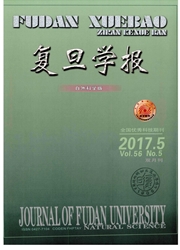

 中文摘要:
中文摘要:
了解水稻转基因是否影响野生稻基因传递的频率,对于评价转基因逃逸及其生态影响有重要意义.本研究构建了不含转基因和含转基因的栽培稻与普通野生稻杂种F2群体,利用分子标记检测了F2群体各位点的基因型和基因频率.以连续卡方分析了F2群体相关位点的基因型和基因频率观察值是否符合理论分离比,同时对各位点进行了连锁不平衡分析,并对实验群体所需的最小样本量进行理论探索.结果表明两个F2群体分别有25.93%与33.33%的位点出现了显著的非随机分离,非转基因与转基因F2群体分别在偏态分离位点数与偏离亲本方向上出现一定差异,并观察到连锁不平衡位点.实验个体数应不少于280个才能保证实验结果准确.外源转基因在杂种后代群体中会因为选择而影响基因分离,进而影响杂种群体的进化潜力.
 英文摘要:
英文摘要:
Transgenes may influence the segregation in crop-wild hybrids, changing the frequency of crop or wild gene transferred to hybrid progeny. Results from such studies are important for assessing ecological impacts from transgene escape. Two F2 populations derived from hybrids of insect-resistant transgenic (Bt/CpTI) rice and its non-transgenic parents with common wild rice were built. Molecular markers were used to analyze the ratios of genotype and gene frequency of each F2 population. Chi-square (X2 ) statistic was used to examine the consistency of observed versus theoretical values of the segregation ratios and linkage disequilibrium. In addition, the optimal sample size required for such a study was investigated. Results showed significant distorted segregation of 25. 93% and 33. 33% loci in the two F2 populations, respectively. The two populations had obvious differences in the number loci and parental preferences for distorted segregation. Further analysis showed a minimum of 280 individuals that were required as an ideal sample size for this type of studies for more accurate results. This study suggests the transgenes are under selection during the process of allelic segregation in the hybrid progeny, and consequently may affect the potential evolutionary fate of hybrid populations.
 同期刊论文项目
同期刊论文项目
 同项目期刊论文
同项目期刊论文
 Conspecific Crop-Weed Introgression Influences Evolution of Weedy Rice (Oryza sativa f. spontanea) a
Conspecific Crop-Weed Introgression Influences Evolution of Weedy Rice (Oryza sativa f. spontanea) a Transgenes for insect resistance reduce herbivory and enhance fecundity in advanced generations of c
Transgenes for insect resistance reduce herbivory and enhance fecundity in advanced generations of c Introgression from cultivated rice influences genetic differentiation of weedy rice populations at a
Introgression from cultivated rice influences genetic differentiation of weedy rice populations at a Gene flow from genetically modified rice to its wild relatives: Assessing potential ecological conse
Gene flow from genetically modified rice to its wild relatives: Assessing potential ecological conse Performance of Hybrids between Weedy Rice and Insect-resistant Transgenic Rice under Field Experimen
Performance of Hybrids between Weedy Rice and Insect-resistant Transgenic Rice under Field Experimen Efficient indica and japonica rice identification based on the InDel molecular method: Its implicati
Efficient indica and japonica rice identification based on the InDel molecular method: Its implicati Normal expression of insect-resistant transgene in progeny of common wild rice crossed with genetica
Normal expression of insect-resistant transgene in progeny of common wild rice crossed with genetica Rapid evolutionary divergence and ecotypic diversification of germination behavior in weedy rice pop
Rapid evolutionary divergence and ecotypic diversification of germination behavior in weedy rice pop 期刊信息
期刊信息
